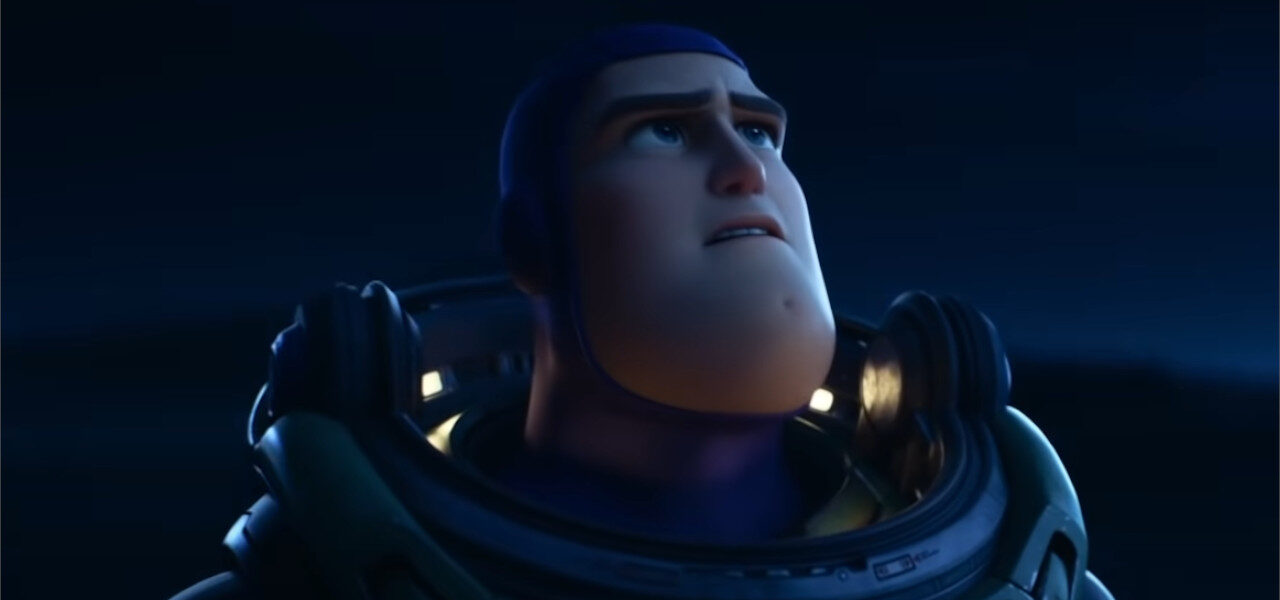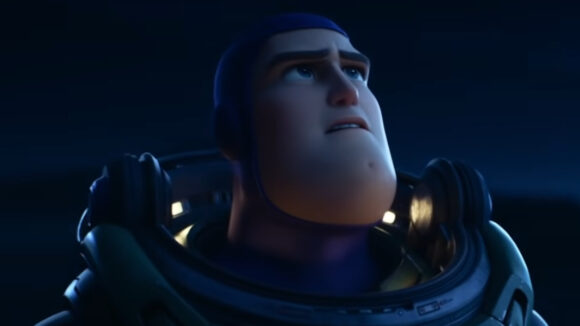

‘Lightyear’ Reviews Roundup: Entertaining Stand-Alone That Doesn’t Hit Franchise’s Previous Lofty Heights
It was always going to be difficult for Pixar’s Lightyear to impress the way that previous entries in the Toy Story franchise have, and initial reviews seem to indicate the prequel falls short of the studio’s lofty standards.
That’s not to say that critics are bashing the film. In fact, it currently has a certified fresh 79% critical rating on Rotten Tomatoes. But, that number represents a new franchise feature low, and one of the lowest scores for any Pixar feature. In fact, the first four Toy Story films are some of the best-reviewed animated features of all time according to the critical aggregation website, boasting 100%, 100%, 98%, and 97% scores respectively.
For our review roundup, we focused on how critics are positioning Lightyear amongst its Toy Story peers. Lightyear is set up as a prequel to the original 1995 Toy Story, pitched as the film that inspired Andy to get the Buzz Lightyear toy which initiated that film’s drama. By placing this movie within the Toy Story canon, comparisons were always going to be inevitable.
Here’s what the critics are saying.
Variety’s Owen Gleiberman seemed to rate Lightyear as a good stand-alone film, if not a great Toy Story film.
Taken on its own eager-to-please terms, the movie is a winning diversion. But given that it’s a spinoff of the Toy Story series, which is the greatest and most sustained achievement in contemporary animation, it should be noted that this is one of those Pixar movies that feels like it has 50 percent Disney DNA.
Justin Chang at the L.A. Times wondered about the legacy of the latest film in the franchise:
It will be interesting to see how Lightyear itself holds up in a quarter-century — just fine, I imagine, and indeed, “just fine” sums up the movie as a whole. Though visually grander and more cosmic in scale than the Toy Story quadrilogy, its story feels thinner and more generic. The script, written by Angus MacLane (who makes his feature directing debut here) and Jason Headley, tosses off a few gently mind-bending twists but otherwise rests comfortably within an accessible, highly allusive branch of family-friendly science fiction.
Tomris Laffly at AV Club had a more cynical take on the film’s genealogical roots:
Why not just make a unique space film without the Toy Story connection, you might rightfully ask Pixar. The wretched marketing phrase “existing IP” is the answer you’re looking for there, and it seems to be an indispensable concept to narrow-minded studios in a theatrical release climate unfriendly to original stories not based on proven moneymakers. After all, Soul, Luca, and Turning Red—three of Pixar’s most recent original, and far superior pictures—were all sent straight to Disney+ without a theatrical release (admittedly, due to pandemic-related reasons at first). In that regard, Lightyear might possess the laser-focused pull to make Toy Story fans flock to the theaters, despite lacking the franchise’s lean and thoroughly accessible creative essence at its core.
Little White Lies’ Hannah Strong was equally dissatisfied with Pixar’s latest trip to the Toy Story well.
Unfortunately, Lightyear is more focused on its action sequences and its baffling villain twist which seems to undermine the entire plot of Toy Story 2. The characters here are reduced to thin sketches and tropes (the convict seeking redemption, the bumbling fool looking to get things right for once, the irritatingly chipper robot assistant) and even Lightyear has less personality than his action figure counterpart in the original Toy Story movie. Perhaps younger viewers will be entertained by the cute robo-cat and the sillier parts of the battle sequences, but Lightyear is really lacking in the heart and soul that made Pixar films so distinctive in the first place.
Writing for The Playlist, Carlos Aguilar hoped for something more original:
Following Pixar’s two most refreshing releases in years, Luca and Turning Red, both of which were deemed unworthy of a full theatrical release, it’s difficult not to perceive Lightyear as a far less compelling and safe bet. How tiresome it is that most studio productions must now exist as part of a larger multiverse in order to merit exposure. In the end, Lightyear reveals that today, given Disney’s business model, “to infinity and beyond” really only means to the inevitable sequel.
“Lightyear” is a Pixar Animation Studios and Walt Disney Pictures production, distributed by Walt Disney Studios Motion Pictures. It was produced by Galyn Susman with executive producers Pete Docter and Andrew Stanton. Angus MacLane directed the film from a screenplay he co-wrote with Jason Headley.



